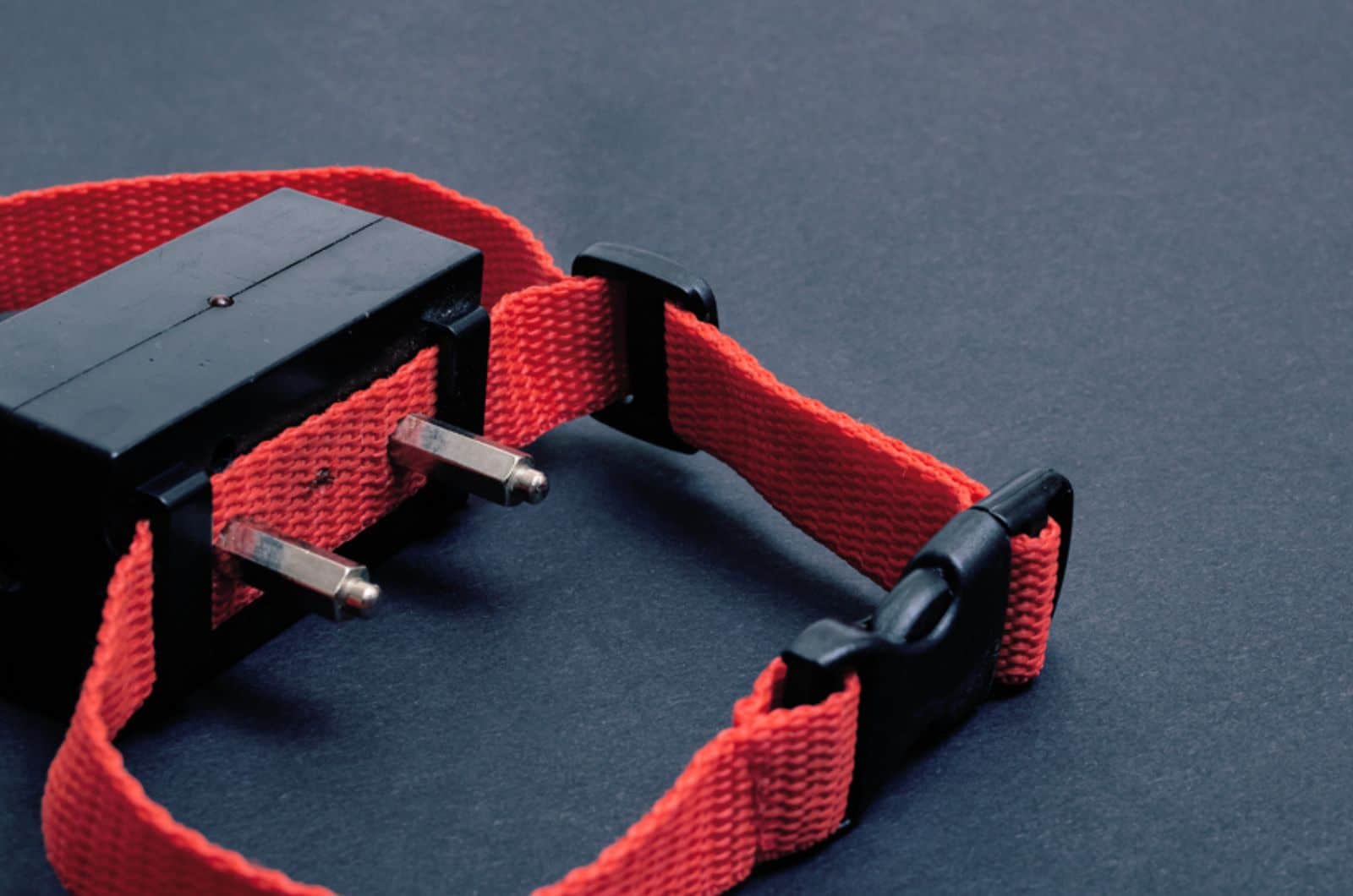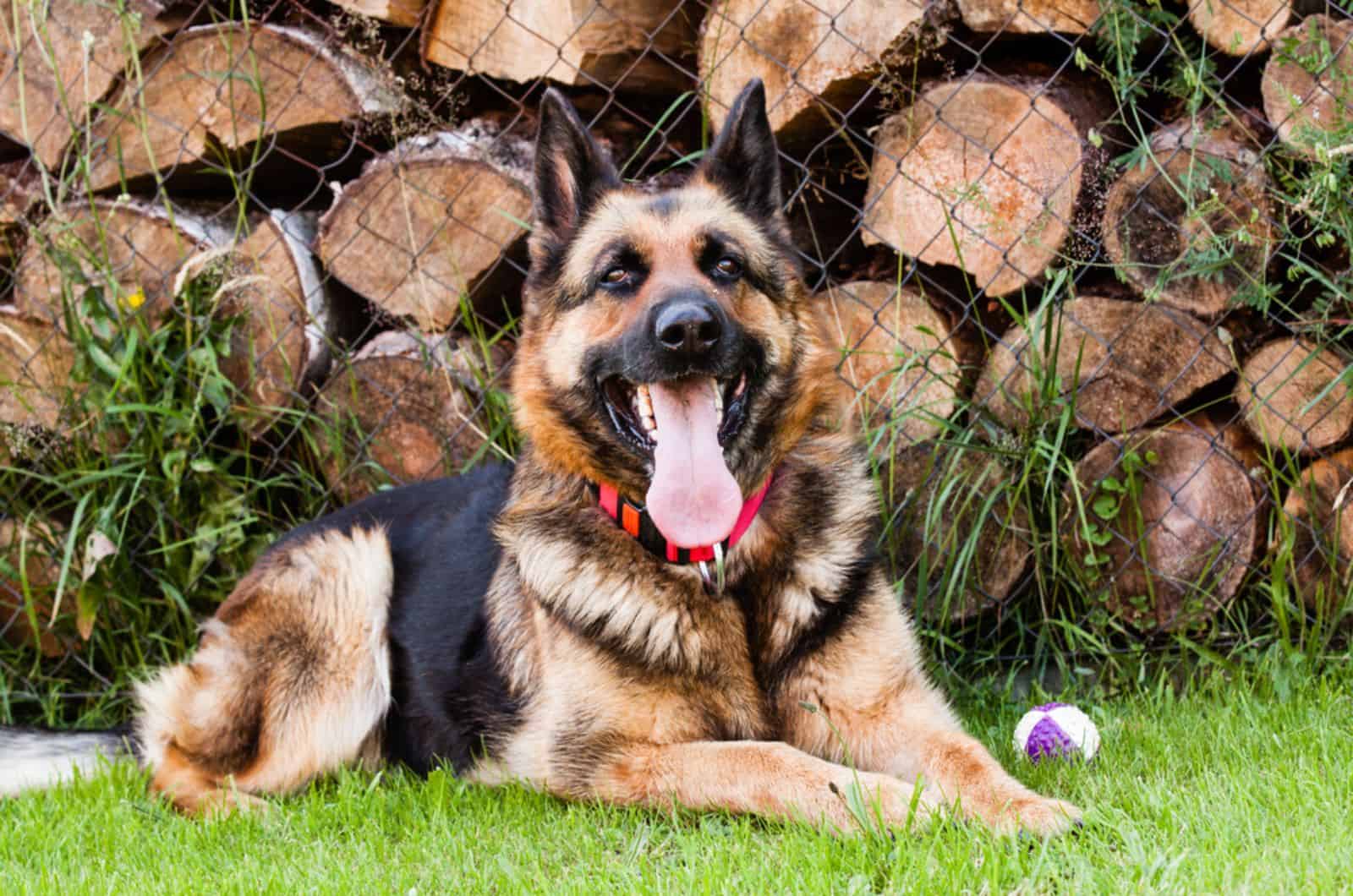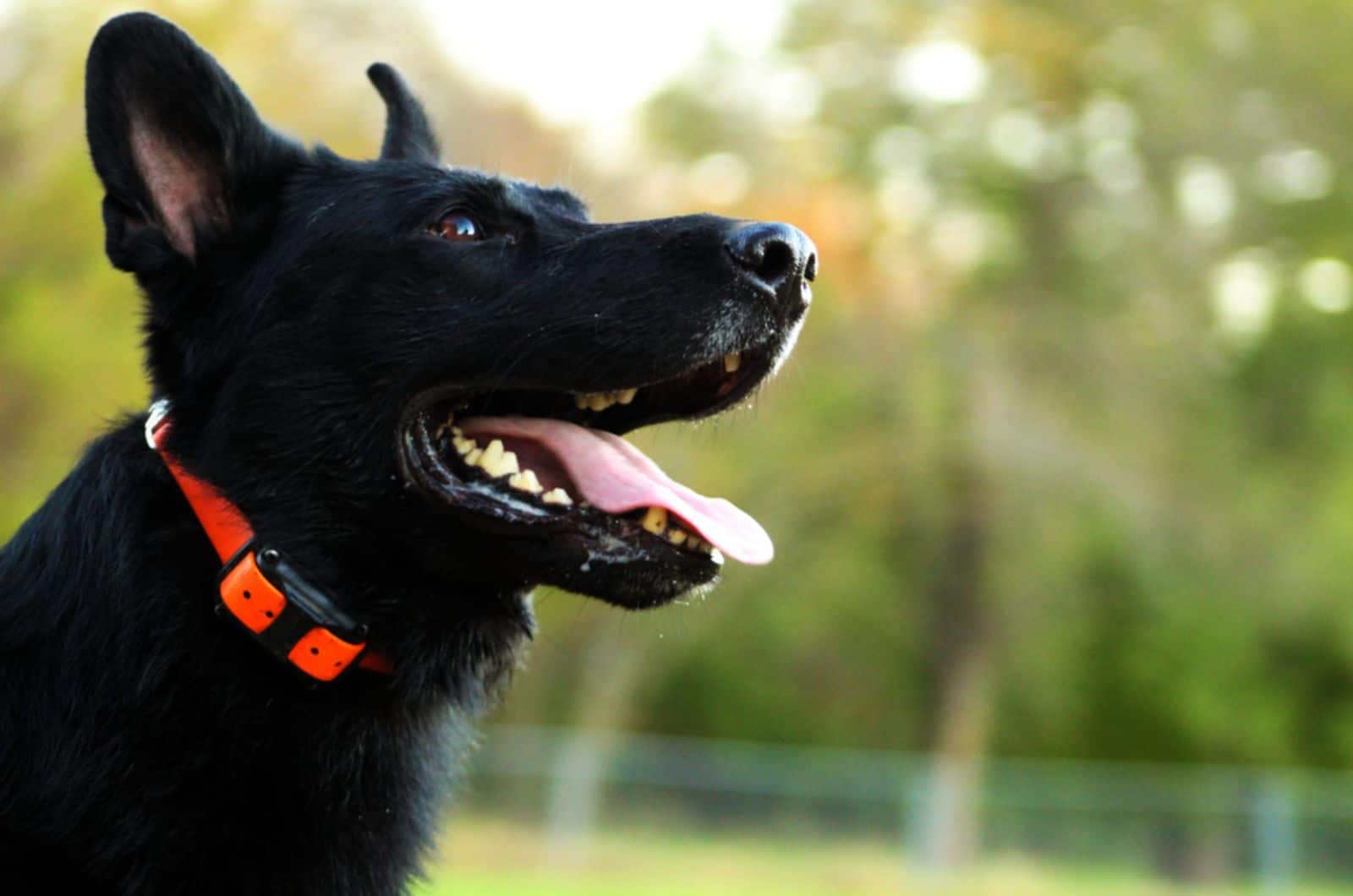German Shepherds are known to be notoriously difficult to train to the point where some people may resort to more extreme measures like shock collars, but should you use shock collars on German Shepherds?
In my personal opinion, you shouldn’t use shock collars on German Shepherds or any other dog breed, not for training at the very least.
If you knew you weren’t going to be able to handle a GSD’s very rigorous maintenance and training requirements, you should’ve opted for a breed that’s a bit easier to train, but similar in looks to the GSD, like the Belgian Malinois and the like.
Though, I’m getting ahead of myself here, using a shock collar isn’t some grave sin, but it does run the risk of hurting your dog if misused and often trains him in the wrong ways.
German Shepherds show the best results when trained through positive reinforcement and not when any sort of force is used against them, no matter how mild the setting can be.
But is it really all that bad? Well, feel free to read on and find out yourself about all of the bad habits shock collars create and the more positive alternatives to the product.
Should You Use Shock Collars On German Shepherds As A Last Resort?

Now I won’t be completely against their use here as I’m meant to highlight a few positives in everything, and shock collars do have a fringe use as a last resort training tool if you’re dealing with a particularly stubborn dog.
One where all attempts at positive reinforcement, ignoring pleas and attention diversion haven’t managed to fully train him.
Though even then, I still suggest consulting a professional trainer on the next step forward and only proceeding to the shock collar stage should the trainer himself suggest it.
Are Shock Collars Really That Bad?

I’d certainly like to think so. For us, even a little bit of static electricity can startle us. Shock collars are essentially that, but amped up by a few magnitudes.
Shock Collars Don’t Teach What’s Right, Only What’s Wrong
While most of them won’t harm the dog, they don’t really teach him what exactly he’s doing wrong, or rather, what he’s supposed to be doing instead.
Physical Punishment Should Never Be Utilized In Training
Not to mention that it’s still a form of physical punishment, one that fosters fear and resentment in the German Shepherd rather than respect toward his owner, you.
People Often Misuse The Collar Which Leads To Canine Resentment, Fear And Aggression
And, sure, proper use of them can lead to improvement in behavior and little to no harm to the dog mentally or physically, but most people tend to misuse the tool and the results come out the exact opposite.
This then leads to the aforementioned resentment and can even grow into proper aggression, one that’s really hard to weed out of your dog later.
Don’t be surprised if he gets tired of it and potentially goes to bite you.
Are There Any Other Detriments To The Shock Collar?

Certainly, ones that don’t directly endanger your dog’s well being but aren’t desirable.
The Prongs Can Cause Skin Irritation And Temporary Fur Loss
The first one is the fact that the metal prongs can often lead to irritation and fur loss on the affected area if the collar is worn for too long.
This can further develop into a mild infection too which will need a bit of treatment to fix, but it’s nothing that moderate use of the collar won’t fix.
Some Models Can Restrict A Dog’s Head And Neck Movement
Other than that, most models tend to be really cumbersome on the dog, limiting the range of movement on his neck, though modern collars are a bit more comfortable and not as limiting.
Different Collar Types Introduce Different Challenges
Then there’s also the issue of the type of collar you’re using.
Remote activated ones require your input which can get somewhat tedious, though it’s better than the ones that are “always on”, the so-called perimeter collars.
These ones can be really time-consuming to set up as you’ll need to lay down wire alongside the perimeter of your yard to help keep your dog inside, not to mention the potential for repeated shock that comes with the perimeter ones, even with a set pause timer.
The Dog Can Escape The Perimeter
This leads into the other issue of your dog simply powering through the shock, breaking through the perimeter entirely and escaping, and we all know that the German Shepherd can be especially stubborn.
They’re An Added Expense To An Already Pricy Maintenance Total
Finally, getting a shock collar is just an added expense to your already sizable maintenance bill for your GSD, no doubt. That’s yet another reason to only stick to it as a last resort as the dog can easily be trained without one in most cases.
Are There Any Good Sides To Shock Collars At All?

There are, I just wanted to get some of my personal bias out of the way at first before proceeding to the potential benefits of modern shock collars.
Proper Use Of A Shock Collar Can Be Beneficial
First of all, proper use of shock collars is a decent last resort option if training isn’t going all too well and you’re adamant on seeing it through.
Non-Harmful Beep And Vibration Options On Most Modern Collars
Secondly, one that goes well with the first one is the fact that most modern collars have a number of non-harmful settings nowadays as milder correction options, most notable beeps and vibrations that scale up to the shocks which aren’t needed most of the time.
Modern Shock Collars Aren’t As Big As Older Models
And finally, most of them aren’t as cumbersome as some of the older ones are, and they will shut off after a set period should your dog escape the active perimeter so he doesn’t keep getting painfully shocked until the battery dies.
Some may even have GPS trackers so you can locate your dog should he get lost.
Truth be told, they’re not all bad, but the added expenses can still be a bit divisive.
If I had to choose, I’d go for something that’s more affordable, but still effective, like this PETDiary one.
In Conclusion
If you can help it, you shouldn’t use shock collars on German Shepherds. There are plenty of better methods out there to ensure that his training goes by smoothly.
And, as we’ve seen in the article, there are plenty of downsides to the shock collars themselves and their effectiveness in providing said correction.
While there are positives around it, I personally believe that they’re too much of a risk to be considered as anything other than a last resort during behavioral training, and even then one should consult a professional dog trainer on the matter.
Though, ultimately, the final decision doesn’t lie on me, but you. Make sure to weigh the pros and cons and pick accordingly.
I fully believe that you’ll make the best decision for your circumstances. Until next time, pet parents.
RELATED LINKS:
- 13 Best Shock Collars For German Shepherd: Train Like A Pro
- Should You Use Shock Collars On Pitbulls Or Not?
- Should You Use Shock Collars On Rottweilers? Here Is The Deal…
- 9 Best Dog Training Collars For Pups Of All Sizes
- Best Shock Collar For Small Dogs: 14 Types For Small Pooches
- 12 Best Shock Collars For Pitbulls: Easy Training Solution
